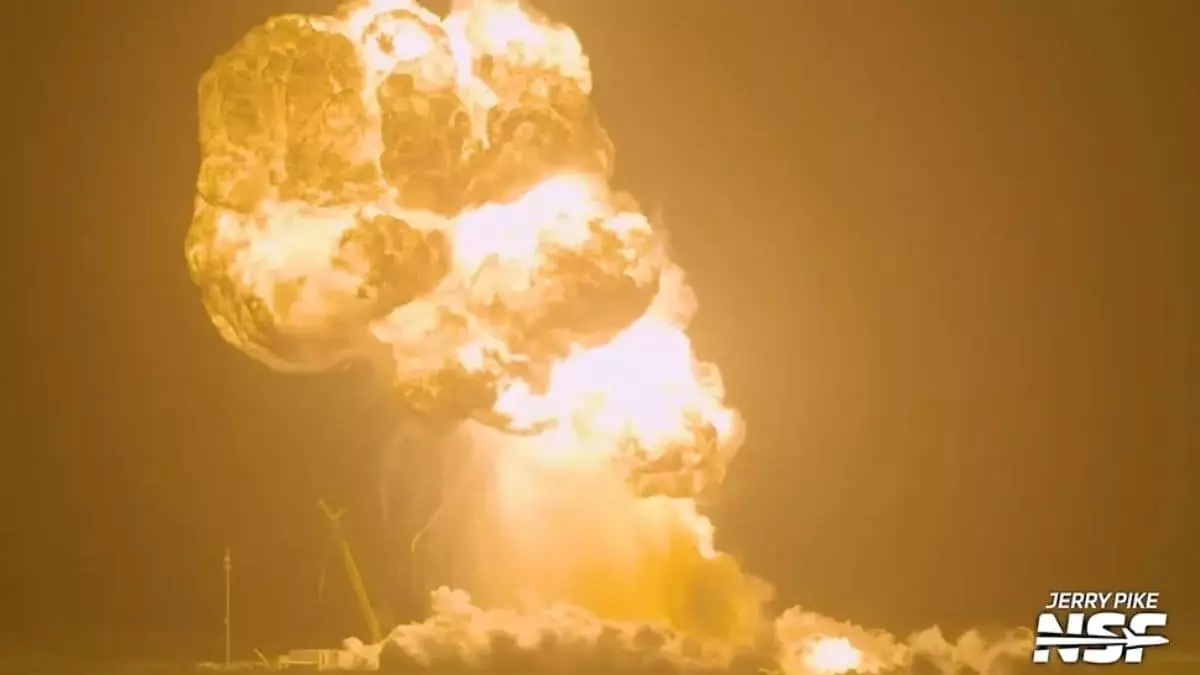On an otherwise uneventful Wednesday night, the allure of technological progress met the harsh reality of engineering flaws as SpaceX’s Starbase facility in Texas was rocked by a harrowing explosion. At 11:00 PM (0400 GMT Thursday), a Starship rocket detonated during what was supposed to be a routine static fire test. The resultant fireball illuminated the Texas sky, but no casualties were reported, highlighting an unsettling reality: while human lives were spared, the rocket’s destruction raised serious questions about the efficacy of SpaceX’s rigorous testing environment.
The Risks of High-Speed Innovation
SpaceX, under the relentless vision of Elon Musk, embodies the audacious spirit of space exploration. However, the incident at Starbase is part of a troubling trend that underscores the risks and repercussions of their aggressive experimentation. Musk himself branded the explosion a “scratch”—a phrase that belies the gravity of a catastrophic failure. This mentality offers a troubling glimpse into a corporate culture that prioritizes rapid advancement over safety and accountability. As SpaceX pushes forward with bold intentions of interplanetary colonization, it’s high time we consider the inherent dangers of rapid technological evolution when lives and public interest hang in the balance.
Environmental Concerns and Corporate Responsibility
The blowback from this explosion doesn’t exist in a vacuum. SpaceX received Federal Aviation Administration (FAA) approval to ramp up their launch cadence to up to 25 missions a year, a decision that brushes aside significant environmental concerns raised by conservation groups. It’s astonishing to witness regulatory bodies favoring ambitious corporate agendas over the ecological implications of frequent launches. In the pursuit of cosmic ambitions, are we too willing to accept a collateral damage to our environment? Problems like ecological degradation do not align with a sustainable vision of space travel that could potentially expand to Mars.
An Indifferent Approach to Failure
SpaceX’s approach, framed within the mantra of “test aggressively and iterate quickly,” raises the question of whether the company is fostering a reckless disregard for failure. Each explosion and setback seem to be framed as a learning opportunity, yet behind this lay serious financial implications, both to stakeholders and to taxpayers funding related programs through NASA. Despite operational disasters, NASA continues to support SpaceX, which brings into question the extent of accountability and regulatory oversight necessary in partnerships between private enterprises and government entities.
Shadows of Past Failures
The recent explosion follows a series of high-profile failures, including a prototype that met an untimely demise over the Indian Ocean. Each failed mission draws attention to a harsh truth: the pursuit of the extraordinary can often lead to extraordinary failures. While innovative leaps can open doors to unprecedented achievements, the path to ultimate success cannot be paved with repeated catastrophic failures. How many more explosions must we witness before we demand a reevaluation of priorities in human space exploration?
In essence, while the ambitions behind SpaceX and the Starship are undeniably monumental, the patterns of negligence and risk management showcased by the recent failure at the Texas facility signal a growing concern about prioritizing speed over safety in a domain enthralled with the promise of cosmic discovery.


Leave a Reply